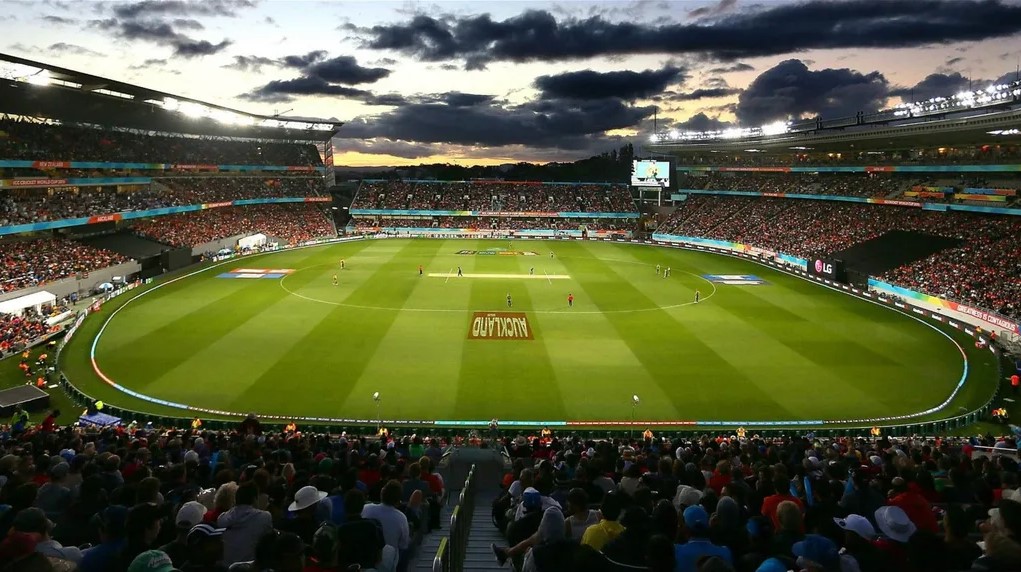Auckland: Cricket is a game deeply rooted in tradition, but also one of measurement and precision. Among the many aspects that define a cricket ground, boundary length is one of the most critical, influencing strategy, field placement, and player performance. One of the most iconic grounds in the southern hemisphere, Auckland’s Eden Park, is notable not just for its atmosphere and history but also for its unique dimensions.
Table of Contents
Overview of Eden Park
Auckland: Eden Park, located in Auckland, New Zealand, serves as the country’s largest stadium and is a multi-purpose venue. It has hosted numerous sports including rugby and cricket. For cricket, it’s the home of the Auckland Aces and frequently hosts international matches.
| Feature | Detail |
|---|---|
| Location | Auckland, New Zealand |
| Seating Capacity | ~50,000 (for cricket) |
| Established | 1900 |
| Primary Use | Cricket and Rugby |
| Ends | City End, Sandringham End |
Auckland: While it’s a stadium rich in heritage, what makes Eden Park a talking point among players and fans alike is its unusual boundary lengths, especially the shorter straight boundaries.
Boundary Dimensions of Eden Park
Auckland: Unlike many other grounds with large circular or oval outfields, Eden Park has a relatively rectangular shape, leading to short straight boundaries and longer square boundaries.
| Direction | Approximate Length (in meters) |
|---|---|
| Straight (City End) | 55–58 meters |
| Straight (Sandringham End) | 55–58 meters |
| Square Boundaries | 64–70 meters |
| Mid-wicket / Cover | 60–65 meters |
Key Observations:
- Shortest Boundary: The straight boundaries are among the shortest in international cricket—just 55–58 meters. This makes Eden Park particularly favorable for big-hitting batsmen.
- Longest Boundary: Square boundaries extend up to 70 meters, aligning with ICC regulations for international matches.
These unusual proportions make strategy critically important for both bowlers and batsmen.
Comparison With Other Grounds
Auckland: Let’s compare Eden Park’s boundaries with some of the other major grounds globally:
| Ground | Shortest Boundary (m) | Longest Boundary (m) |
|---|---|---|
| Eden Park (NZ) | ~55 | ~70 |
| MCG (Australia) | ~65 | ~85 |
| Wankhede (India) | ~60 | ~70 |
| Lord’s (England) | ~65 | ~80 |
| Sharjah (UAE) | ~62 | ~68 |
How Boundary Length Affects the Game
1. Batting Strategy
Auckland: Short boundaries, especially straight, encourage more aggressive play. Batsmen are more willing to play lofted drives and slogs, knowing they don’t need to clear an 80-meter rope.
- Advantage to Big-Hitters: Power-hitters can score boundaries with ease.
- High Scoring Matches: Matches at Eden Park often result in high scores, especially in T20s.
2. Bowling Tactics
Bowlers often struggle with Eden Park’s dimensions. Shorter boundaries can turn mistimed shots into sixes.
- Bowling Wide Lines: Bowlers aim outside off-stump to force batsmen to hit to the larger square boundaries.
- Use of Pace and Variation: Slower balls, cutters, and off-pace deliveries are more common to disrupt timing.
3. Field Placement
Captains need to adapt field placements based on the boundary size.
- Deep Fielders on the Straight: Fielders are placed deep near the short boundaries, but even then, catches are rarer.
- Protecting Square Areas: With long square boundaries, there’s more room to protect twos and threes.
ICC Regulations on Boundary Size
| Specification | Measurement |
|---|---|
| Minimum Boundary | 59.43 m (65 yards) |
| Maximum Boundary | 82.29 m (90 yards) |
While Eden Park’s straight boundaries are slightly under the 65-yard recommendation, the ground received waivers due to its long-standing structure and multi-use nature. The ICC has granted exceptions to ensure matches can be held while maintaining fairness.
Memorable Matches Highlighting Boundary Impact
1. 2015 ICC World Cup Match: NZ vs Australia
- The short boundaries helped Brendon McCullum launch a brutal assault on the Aussie bowlers.
- McCullum scored 50 off just 24 balls, using the straight boundaries masterfully.
2. T20 Internationals
- Scores in excess of 200 are common at Eden Park in T20 cricket.
- Glenn Phillips and Martin Guptill have both registered high-scoring innings at the venue, exploiting the short boundaries.
Challenges & Criticism
While fans enjoy the spectacle, purists often criticize Eden Park’s dimensions:
- Bowling Inequality: Bowlers feel the ground offers little margin for error.
- Unbalanced Contest: High-scoring games sometimes reduce the strategic depth of the sport.
- Safety Concerns: Spectators near the straight boundaries may be at increased risk due to the proximity to the action.
Despite this, Eden Park continues to be a fan-favorite venue, hosting some of New Zealand’s most iconic cricketing moments.
Innovations and Adaptations
To counter the effects of short boundaries, match organizers and curators have tried:
- Using different pitch strips: Shifting the pitch slightly to adjust angles.
- Higher boundaries: Installing taller boundary ropes and fences to slightly offset short distances.
- Tighter ball regulations: Ensuring balls are not overly favorable to batters.
The boundary lengths at Auckland’s Eden Park, particularly the 55–58 meter straight boundaries, set it apart from other international venues. While they create an exciting spectacle for fans and favorable conditions for batsmen, they also introduce challenges for bowlers and captains. This unique character adds to the charm and unpredictability of cricket in New Zealand.
Understanding these dimensions is vital—not just for players and coaches, but also for fans who want to better appreciate the tactical nuances of the game. As cricket continues to evolve, venues like Eden Park remind us that no two grounds are the same, and sometimes, it’s the smallest dimensions that have the biggest impact.


